The Enigma of Flight MH370: What Happened to the Missing Boeing 777?
Written on
Chapter 1: The Vanishing Act
On March 8, 2014, at 12:40 AM, Malaysia Airlines Flight 370 was scheduled for a six-hour journey from Kuala Lumpur to Beijing, carrying 227 passengers and 12 crew members. The flight was piloted by the experienced Zaharie Ahmad Shah, 53, with second officer Fariq Abdul Hamid, 27, assisting him.
At 12:42 AM, the aircraft took off smoothly from Kuala Lumpur, following its planned route without any issues for the first 20 minutes. By 1:08 AM, it crossed the Malaysian coastline and entered the South China Sea, heading toward Vietnam, with everything appearing normal.
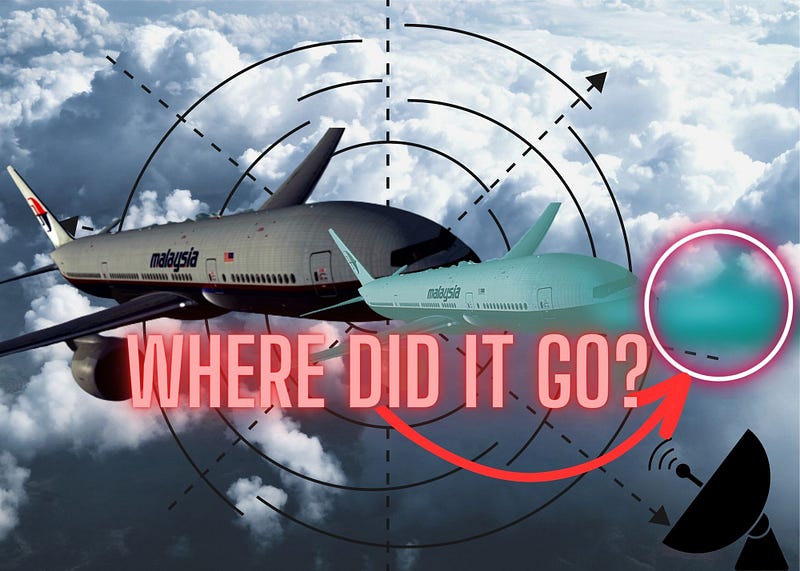
The plane was cruising at an altitude of 35,000 feet, and most passengers were likely asleep. Eleven minutes later, as it entered Vietnamese airspace, the air traffic controller in Kuala Lumpur instructed the flight to contact Ho Chi Minh air traffic control. Captain Zaharie's response—“Goodnight, MAS 370”—marked the last communication from the flight.
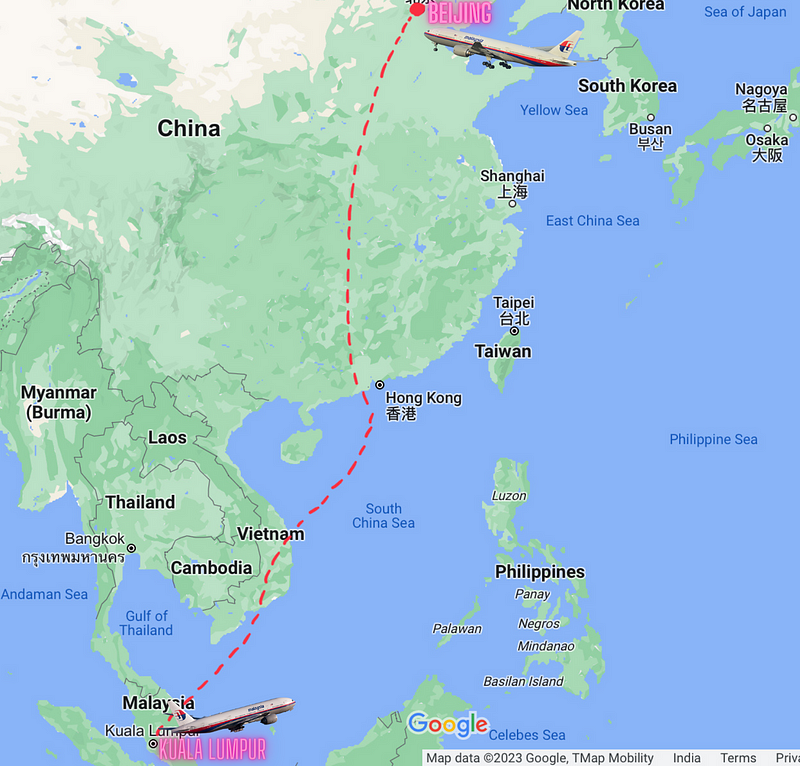
At approximately 1:21 AM, MH370 vanished from radar. Although the Malaysian ATC may have assumed the aircraft had exited their radar coverage, the disappearance was immediately noticed by Vietnamese air traffic controllers, who attempted to re-establish contact for 18 minutes without success. This prompted Vietnam to alert Kuala Lumpur about the missing flight, but the Aeronautical Rescue Coordination Centre was not informed until four hours later. Thus, the first rescue operation commenced at 6:32 AM, around the time MH370 was scheduled to arrive in Beijing, but no one knew where the Boeing 777 had gone.
The flight included passengers from various nations, with the majority being Chinese citizens, while the crew was entirely Malaysian.
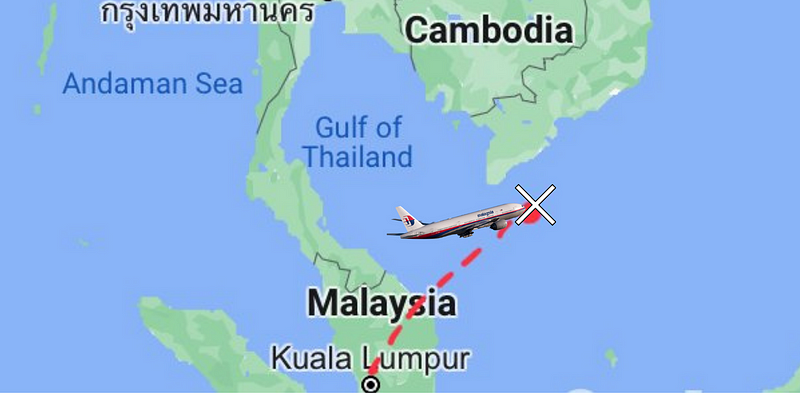
The U-Turn and Initial Search Efforts
An extensive search operation began in the South China Sea, involving 34 ships and 28 aircraft from seven countries, yet no evidence of the flight was found. The first significant clue emerged from Malaysian military radar, which tracked the flight during its unexpected detour. Contrary to expectations, the last radar contact at 2:22 AM indicated that MH370 was not over the South China Sea but had made a nearly 180-degree turn, heading west toward the Strait of Malacca.
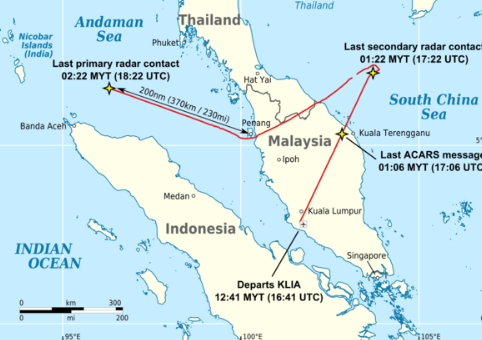
This route was in stark contrast to the flight's intended direction toward Beijing in the northeast. The revelation of this drastic change in course fueled various conspiracy theories, including notions of pilot suicide or hijacking.
The Seventh Arc Discovery
Days later, new findings emerged from MH370’s automatic signal exchanges with Inmarsat satellites above the Indian Ocean. These signals, referred to as 'heartbeat' signals, allowed scientists to deduce the aircraft's trajectory. Alarmingly, after heading west, MH370 continued its flight southward into the Indian Ocean for an additional six hours, disproving earlier theories of a Himalayan crash.
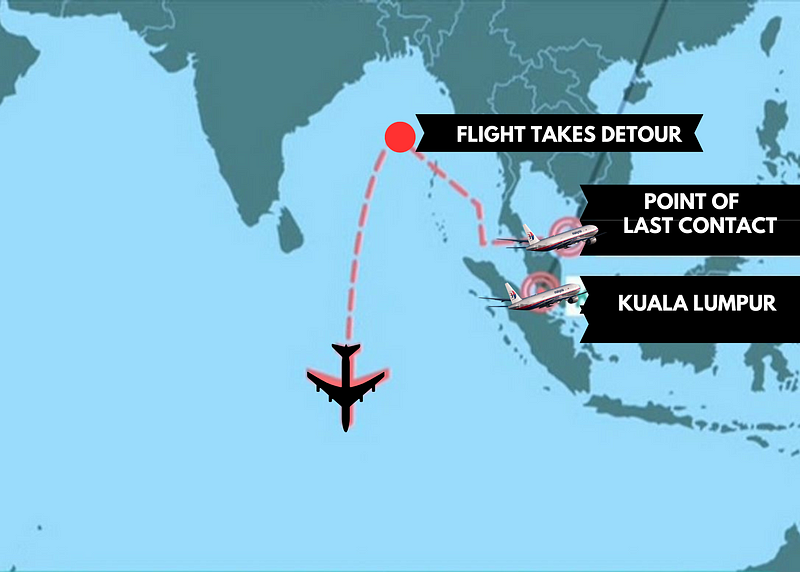
By analyzing the timing of the seven signals, experts determined the plane’s distance from the satellite, creating a series of arcs. The last signal indicated the aircraft was over the Indian Ocean, with no further communications following this point. Investigators used this data alongside fuel capacity and cruising speed to adjust their search area to the Indian Ocean, approximately 700 miles along the seventh arc.
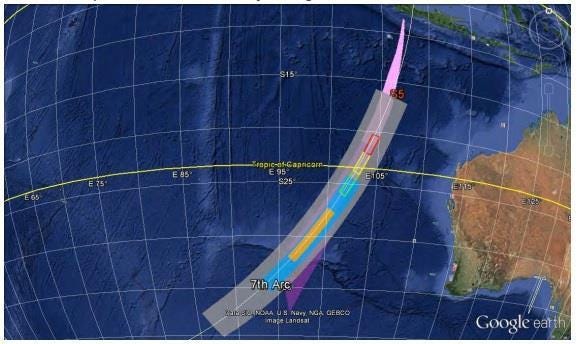
Despite extensive searches of this less-explored region, no debris was located. The operation soon became the most expensive in aviation history, costing the Malaysian government $160 million. By March 24, the government announced that the flight had likely ended in the Indian Ocean, with all passengers presumed dead.
This video titled "10 YEAR ANNIVERSARY | FLIGHT MH370: The Vanishing Boeing 777" revisits the case, exploring the details and theories surrounding the disappearance of MH370.
The First Evidence Emerges
In 2015, a breakthrough occurred when a piece of metal was discovered on Reunion Island in the Indian Ocean. Identified as a flaperon, this component of the aircraft was confirmed by Boeing to belong to MH370, providing the first tangible evidence that supported the theory of the flight's crash into the ocean.

Amateur investigator Blaine Gibson embarked on a mission to uncover more debris, collaborating with ocean drift experts to understand the potential drift of the wreckage. His search led him to Mozambique, where he found another piece of wreckage bearing the words 'No Step.' This, too, was verified by Boeing as part of the lost aircraft, marking Gibson's discovery of the second confirmed piece of debris, found approximately 4,400 miles from the primary search area.
Gibson would eventually locate 15 more pieces of debris, totaling 30 pieces from the western Indian Ocean.
The Last Search: A Continuing Mystery
By January 17, 2017, three years after the flight's disappearance, the search had concluded after covering 46,000 square miles without finding the main wreckage or black box. The mission was relaunched in 2018 when Ocean Infinity contracted with the Malaysian government, promising payment only if significant portions of the plane were recovered. Despite using advanced underwater surveillance technology, their search also ended in failure after six months.
The mystery of MH370 remains unresolved. Theories abound, including human error, electrical failures, and potential hijacking.
Theories of Disappearance: Pilot or Passenger Involvement?
One of the most debated aspects of this case involves the cause of the flight's disappearance from radar. Was it due to a technical failure, or did someone intentionally disable the transponders? Captain Zaharie Ahmad Shah, the experienced pilot, became a focal point of speculation. Some suggest he may have turned off the radar system and deliberately crashed the plane.

Proponents of this theory note the flight's unusual deviation from its route, which could not have occurred solely by autopilot. They also highlight that the flight maneuvered precisely between the airspaces of Thailand and Malaysia, suggesting a calculated effort to avoid detection. Furthermore, Zaharie's possession of a flight simulator, where he had mapped a route similar to MH370’s, raises questions.
However, Zaharie was a well-respected pilot with no apparent personal or financial issues. There were no signs suggesting he harbored suicidal thoughts.
Another theory points to the possibility of a hijacking gone awry, raising suspicions about two Iranian passengers who traveled on false passports. Despite this, there was no substantial evidence linking them to terrorism.
The Oxygen Deprivation Theory
A widely discussed third theory posits that an oxygen deficiency in the cabin may have incapacitated everyone on board, including the pilots. This could have resulted from an electrical failure or system malfunction. In this scenario, as the flight neared 1:19 AM, the pilots might have recognized a critical electrical issue, leading them to attempt an emergency return to Kuala Lumpur. However, the situation may have escalated rapidly, resulting in oxygen deprivation that left the crew unconscious. The plane would then have continued on autopilot until it eventually ran out of fuel and crashed into the ocean.
As the search for answers continues, various conspiracy theories persist, including fantastical ideas about a Bermuda Triangle in the Indian Ocean and even alien abduction. However, a more grounded exploration of the mystery is expected with an upcoming Netflix documentary.
The documentary titled "MH370: The Plane That Disappeared | Official Trailer | Netflix" promises to delve into the complexities surrounding this aviation mystery.
With advancing technology and the continued dedication of researchers, there is hope that the enigma of MH370 may one day be unraveled.